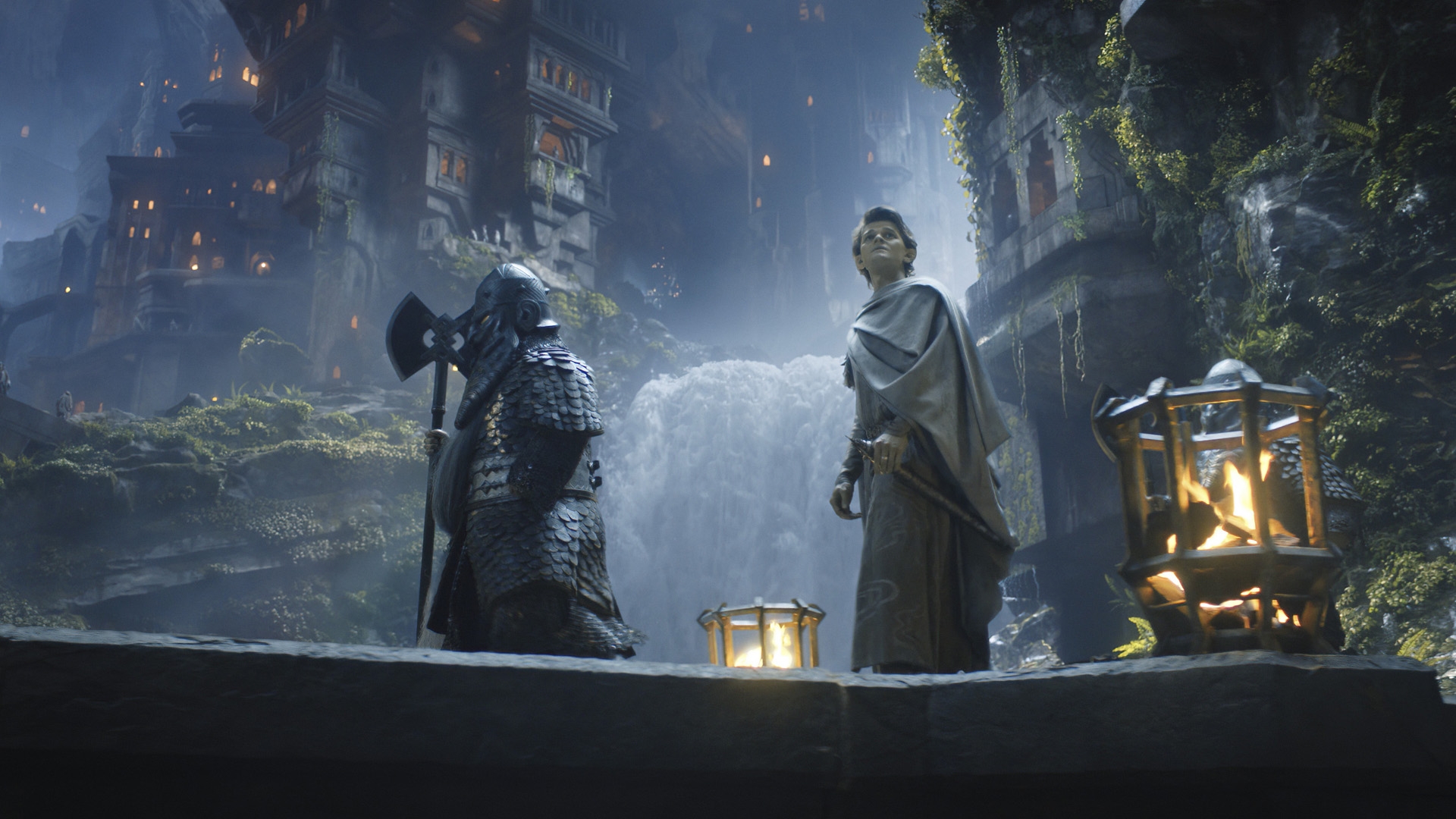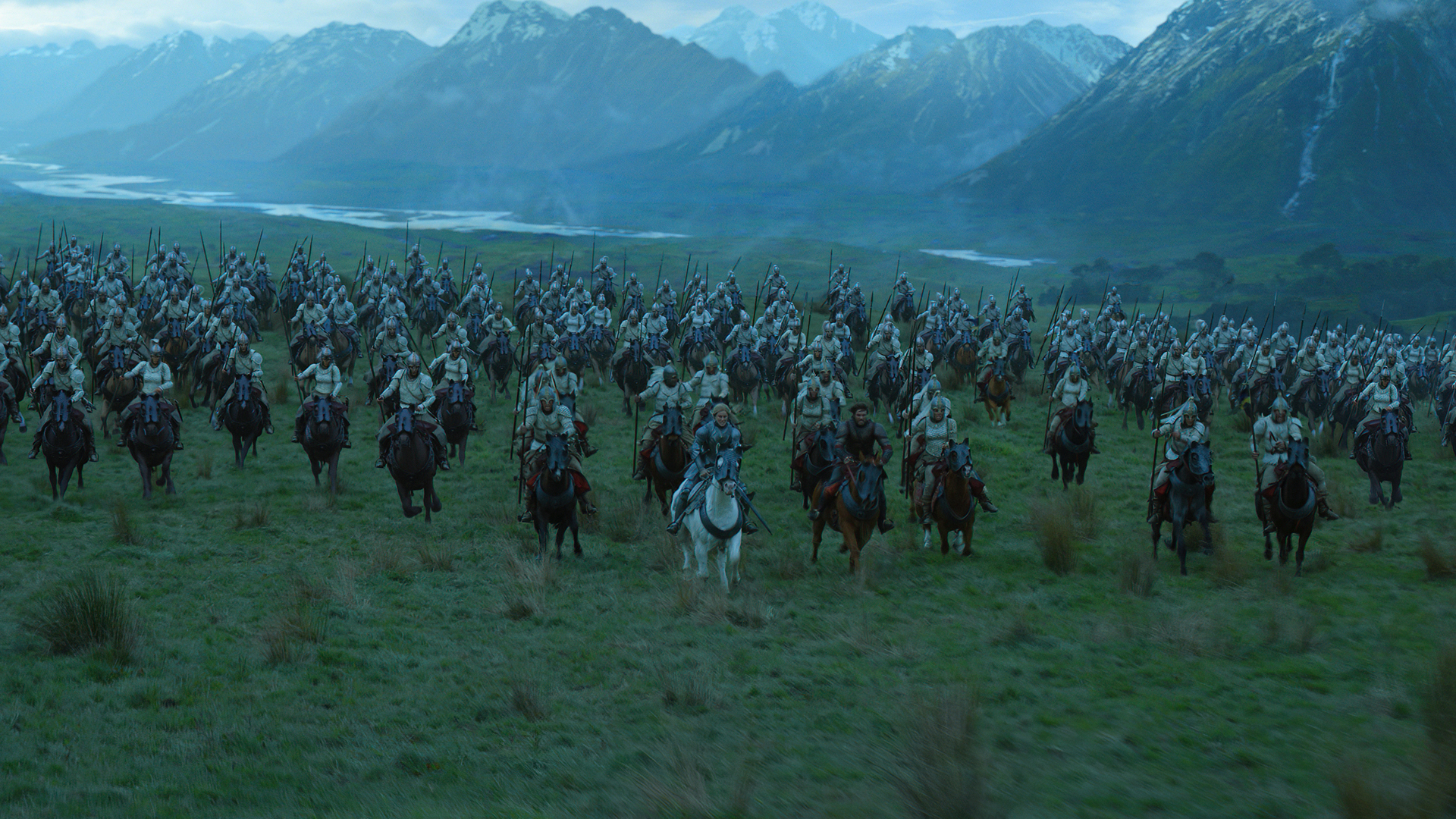
The Rings of Power's creative team considered using Star Wars' Volume technology – but decided not to for one major reason.
Chatting exclusively to TechRadar, VFX producer Ron Ames revealed that conversations were held about whether the Prime Video series should utilize the award-winning tech pioneered by Industrial Light and Magic (ILM).
For those unfamiliar with the tech, the Volume – otherwise known as StageCraft – is a virtual production set comprising a giant wall of LED screens. It allows filmmakers to shoot scenes with a blend of VFX and live-action, with the LED screen wall used as a CGI backdrop that actors and sets can be filmed in front of.
Essentially, StageCraft replaces the use of green screen technology, allowing actors to "interact" with the world around them, and get a sense of scale and size of the CGI environment that they're supposed to exist within. The wall screen can also be realigned in real time while a scene is being filmed, too.

The technology was initially designed for The Mandalorian, the first Star Wars TV show. It's proven to be so revolutionary, though, that StageCraft has been used on numerous Disney-owned properties, such as Marvel movie Thor: Love and Thunder. It's also been loaned out to other studios for certain projects, including DC superhero flick The Batman.
ILM were one of two main VFX studios – Weta FX being the other – that The Rings of Power's team hired to produce the high fantasy show's 9,500 VFX shots. Given the close working relationship between ILM and Amazon Studios' Lord of the Rings TV series, it isn't a stretch to suggest that ILM's LED wall-based Volume technology could have been used.
However, Ames confirmed that the Prime Video show's executive team decided against using the Volume and to primarily shoot on location instead. The reason? To ensure the series felt real and retained the natural aesthetic that Peter Jackson's Lord of the Rings film trilogy possessed.
Get daily insight, inspiration and deals in your inbox
Sign up for breaking news, reviews, opinion, top tech deals, and more.
"We used virtual production across the board," Ames explained. "But we didn't use LED walls because we chose to shoot on location. Using the Volume would have been complex for us. If you look at our imagery, it's wide and expansive. To try and contain that on an LED wall would have been impossible."

Ames' reasoning is sound. StageCraft is a mightily impressive tool and one that's certainly made filming certain movies and TV shows a lot easier than before. After all, it allows actors to perform in environments that they can physically see – something that would have helped Sir Ian McKellen on the set of The Hobbit. Back in 2013, the legendary actor revealed he almost quit acting because he couldn't get to grips with the green screen technology used on that movie.
However, StageCraft clearly has its limitations. As Ames revealed, the screen wall boundaries are restrictive after a certain point and it doesn't possess the authenticity that a fully built set or real world location has. The team behind Andor, the latest Star Wars Disney Plus show, chose not to use the Volume for similar reasons, opting instead to film in actual locations or on detailed, fully realized sets that actors can live in and run around.
Amazon's Lord of the Rings, then, made the right call in not using StageCraft. It's a series already stuffed with VFX – Ames guesses that about 70% of the high fantasy show contains some element of technological innovation – so implementing the Volume would have made it feel even more visually sanitary than it sometimes is.
For more exclusive content on The Rings of Power, find out how that explosive episode 6 ending was brought to life. Alternatively, read up on whether the show's cast know who is really playing Sauron and the true identity of The Stranger.
As TechRadar's senior entertainment reporter, Tom covers all of the latest movies, TV shows, and streaming service news that you need to know about. You'll regularly find him writing about the Marvel Cinematic Universe, Star Wars, Netflix, Prime Video, Disney Plus, and many other topics of interest.
An NCTJ-accredited journalist, Tom also writes reviews, analytical articles, opinion pieces, and interview-led features on the biggest franchises, actors, directors and other industry leaders. You may see his quotes pop up in the odd official Marvel Studios video, too, such as this Moon Knight TV spot.
Away from work, Tom can be found checking out the latest video games, immersing himself in his favorite sporting pastime of football, reading the many unread books on his shelf, staying fit at the gym, and petting every dog he comes across. Got a scoop, interesting story, or an intriguing angle on the latest news in entertainment? Feel free to drop him a line.